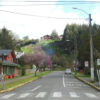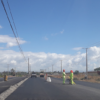Chile’s Changing Economic Landscape

Photo by Lori Dorchak
| By Daren Kaiser |
| Over the last few years the Chilean economy has seen a number of important changes.
When I first arrived in the country in mid 2010, the price of copper was close to $4.00 USD/lb and the nation’s GDP was growing at about 6% annually (compared to today when copper trades at about $2.25 USD/lb and the GDP growth rate is right around 2%). I remember back in early 2014 when most industrial metal prices were starting to head lower and Michelle Bachelet was about to take office as president, many analysts took it to mean that the entire country was doomed. Their logic was that if the new president was going to be raising taxes in the midst of a world wide slump in the mining industry, it would mean hard times for Chile and significant downside risk for assets held within the country. Articles titled “The Chilean Miracle Goes in Reverse” and “Is This The End Of The Chilean Miracle?” began circulating in publications like the Forbes and The Wall Street Journal. Having a decent amount of exposure to the real estate market in Chile’s central regions, I can’t begin to explain how many people tried to convince me that it was time to cash out of my holdings and head to greener pastures. I heard people make the claim that Chile was on track to turn into the next Venezuela and that foreigners in the country better tread lightly. While I always enjoy hearing arguments that run contrary to my own beliefs, I didn’t take this advice at the time and am glad I didn’t to this day. Just a couple months ago, the Heritage Foundation once again ranked Chile as the 7th most economically free nation on the planet, placing it ahead of the US, the UK, and every European nation other than Switzerland. I’ve seen the country operate under a business friendly president as well as a more left leaning one and year after year I’ve watched the number of people moving to Chile for either work or retirement climb steadily. One of the most common mistakes I see people make when talking about Chile’s future trajectory is that they basically put the entire country into one box and don’t spend anytime highlighting the differences in regional trends. From Mining to EnergyThe analysts that were so sure Chile was heading down hill a couple years ago completely missed the fact that just as the mining industry was entering a lull, billions upon billions of investment dollars were making their way into Chile’s budding energy industry. 2014 was the year that Endesa (the country’s largest electric utility company) began working on a new $660 million USD hydroelectric project in the mountains just a couple hours from where I live and it seems like just about every other week another major player in the energy field announces a new multimillion dollar hydroelectric, solar, or wind project. From Annual Crops to Fruit and Nut PlantationsAnother example of these shifting trends can be found in Chile’s emerging agricultural sector. Just a few years ago, a good portion of the fertile central valley outside of Talca was planted in annual crops like corn, wheat, and tomatoes. While it’s still commonplace to see these crops in the area, climatic and market trends have been pushing more and more fruit and nut growers into Chile’s 7th Region which in turn is driving up prices for property suitable for things like cherries and hazelnuts. One particular Italian hazelnut grower that operates in Chile has had a buy order out for something like 3,000 hectares (about 7,500 acres) for the last couple of years because the production from their current farms can’t seem to keep up with demand from their buyers. InfrastructureEver since I first moved to Chile, I’ve made a point of keeping myself abreast of the most recent developments in the mining, energy, agricultural, and timber industries as they affect different regions of the country. That being said, nothing draws my attention the same way as infrastructure. Just a few hours south of Santiago, there are some absolutely mammoth infrastructure projects underway right now which are set to change the economic landscape of the region. If you ask the average Chilean in the area about these projects, they’ll tell you these things have been decades in the making. If you dig deep enough though and find out about the true origins, you’ll realize that political rulers in the southern cone have actually dreamed about making these projects a reality for centuries. I’m not talking about the simple construction or paving of a new road or building of a new bridge. What I’m referring to is more of a system of infrastructure improvements that, when fully operational, will have a much greater impact on the area than any of it’s individual parts. Even though things tend to move slowly here in Chile, the best part about all of this is that the new system (I’ll refer to it as the 7th Region’s B.O.C.), after years and years of planning and implementation, is finally nearing completion. This is going to mean a significant restructuring of shipping, distribution, and travel routes, enhancing economic growth and prosperity here in Region 7.
|






Leave a Reply